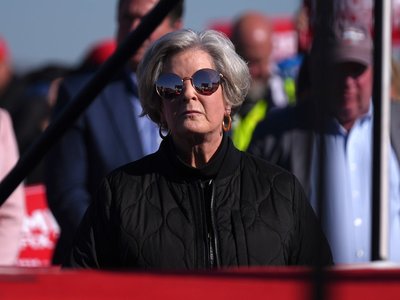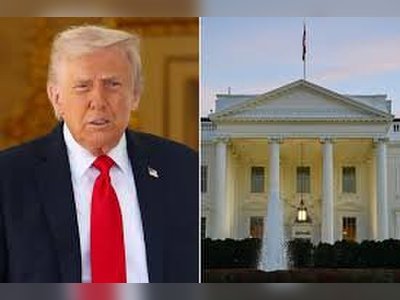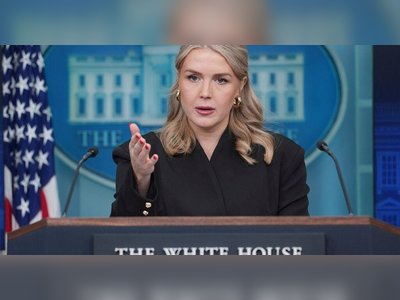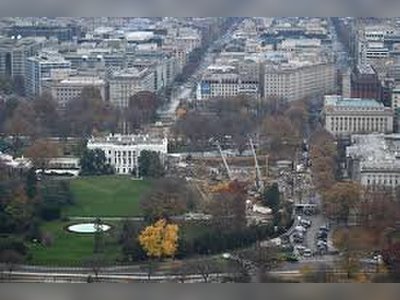Greenland's Opposition Wins Election Amid Independence Discussions and U.S. Interests
The Democratic Party secures a formidable victory, reigniting debates on independence and the territory's relationship with the United States.
In a surprising turn of events, Greenland's centre-right Democratic Party has emerged victorious in the recent general election, capturing approximately 30% of the votes, according to near-complete results.
This election, characterized by discussions surrounding independence from Denmark and heightened interest from the United States, marks a significant political shift within the semi-autonomous territory.
Jens-Frederik Nielsen, the leader of the Democratic Party, emphasized the need for unity in these turbulent times, given the external interest in Greenland.
“Greenland needs us to stand together in a time of great interest from outside.
There is a need for unity, so we will enter into negotiations with everyone,” he stated to local media.
As the Democratic Party prepares to form a coalition government, it faces the challenge of negotiating with other political factions in an effort to establish a majority.
For nearly 300 years, Greenland has been under Danish governance, located about 3,000 kilometers (1,860 miles) from Copenhagen.
While Greenland manages its internal affairs, foreign relations and defense matters remain under Danish control.
Five of the six major parties in the election support varying degrees of independence from Denmark, though they differ significantly in their proposed timelines.
The Democratic Party advocates for a gradual approach to independence, focusing initially on strengthening self-governance.
In contrast, Naleraq, another opposition party, aims to initiate the independence process immediately and seeks to reinforce its ties with the United States.
The party appears to have garnered nearly a quarter of the votes, buoyed by the recent switch of popular politician Aki-Matilda Hoegh-Dam from a ruling party.
Her strong support has positioned Naleraq as a critical player in the new political landscape.
The outcomes have disrupted the standing government, led by Prime Minister Mute B Egede of the Inuit Ataqatigiit party, which is projected to take third place.
The Siumut party is also expected to finish in fourth.
More than 40,000 of Greenland’s 57,000 residents were eligible to vote for 31 Members of Parliament and local government representatives across 72 polling stations.
Voting patterns suggest that many Greenlanders were ready for a change in leadership, influenced by recent discontent regarding new fisheries laws and other domestic policies.
Political analysts assert that while independence remains a significant goal for many Greenlanders, there is a consensus on the necessity of economic reforms and improvements in healthcare prior to pursuing full sovereignty.
Since the 2009 establishment of the right to hold a referendum on independence, the conversation around sovereignty has gained heightened visibility, particularly in light of U.S. interest.
Former President Donald Trump first proposed acquiring the territory in 2019 and has reiterated this view since taking office again in January.
Notably, he recently stated, “We need Greenland for national security.
One way or the other we're gonna get it.” However, both Greenlandic and Danish leaders have consistently rejected such propositions.
In response to the evolving geopolitical dynamics, Nielsen has called for a steady engagement approach with the United States, advocating for a unified front in light of the rapid global developments affecting Greenland.
This election, characterized by discussions surrounding independence from Denmark and heightened interest from the United States, marks a significant political shift within the semi-autonomous territory.
Jens-Frederik Nielsen, the leader of the Democratic Party, emphasized the need for unity in these turbulent times, given the external interest in Greenland.
“Greenland needs us to stand together in a time of great interest from outside.
There is a need for unity, so we will enter into negotiations with everyone,” he stated to local media.
As the Democratic Party prepares to form a coalition government, it faces the challenge of negotiating with other political factions in an effort to establish a majority.
For nearly 300 years, Greenland has been under Danish governance, located about 3,000 kilometers (1,860 miles) from Copenhagen.
While Greenland manages its internal affairs, foreign relations and defense matters remain under Danish control.
Five of the six major parties in the election support varying degrees of independence from Denmark, though they differ significantly in their proposed timelines.
The Democratic Party advocates for a gradual approach to independence, focusing initially on strengthening self-governance.
In contrast, Naleraq, another opposition party, aims to initiate the independence process immediately and seeks to reinforce its ties with the United States.
The party appears to have garnered nearly a quarter of the votes, buoyed by the recent switch of popular politician Aki-Matilda Hoegh-Dam from a ruling party.
Her strong support has positioned Naleraq as a critical player in the new political landscape.
The outcomes have disrupted the standing government, led by Prime Minister Mute B Egede of the Inuit Ataqatigiit party, which is projected to take third place.
The Siumut party is also expected to finish in fourth.
More than 40,000 of Greenland’s 57,000 residents were eligible to vote for 31 Members of Parliament and local government representatives across 72 polling stations.
Voting patterns suggest that many Greenlanders were ready for a change in leadership, influenced by recent discontent regarding new fisheries laws and other domestic policies.
Political analysts assert that while independence remains a significant goal for many Greenlanders, there is a consensus on the necessity of economic reforms and improvements in healthcare prior to pursuing full sovereignty.
Since the 2009 establishment of the right to hold a referendum on independence, the conversation around sovereignty has gained heightened visibility, particularly in light of U.S. interest.
Former President Donald Trump first proposed acquiring the territory in 2019 and has reiterated this view since taking office again in January.
Notably, he recently stated, “We need Greenland for national security.
One way or the other we're gonna get it.” However, both Greenlandic and Danish leaders have consistently rejected such propositions.
In response to the evolving geopolitical dynamics, Nielsen has called for a steady engagement approach with the United States, advocating for a unified front in light of the rapid global developments affecting Greenland.












